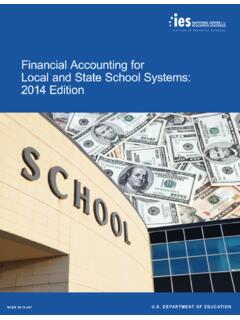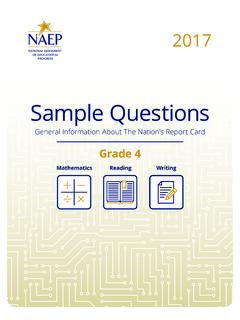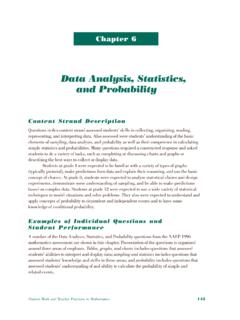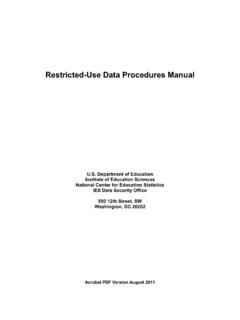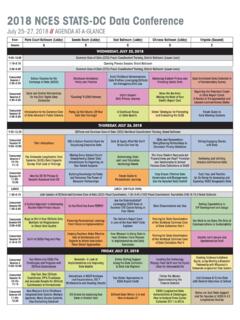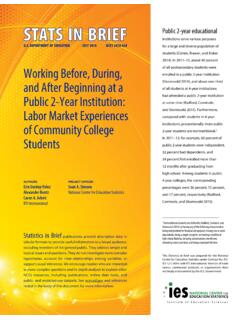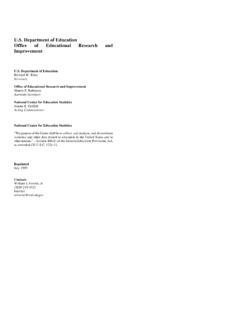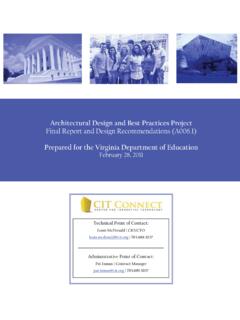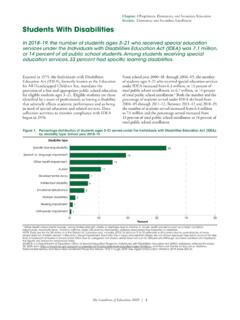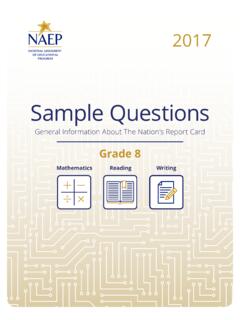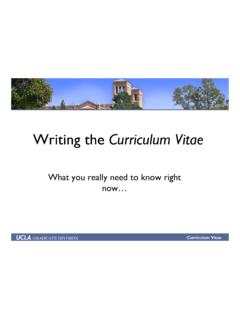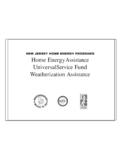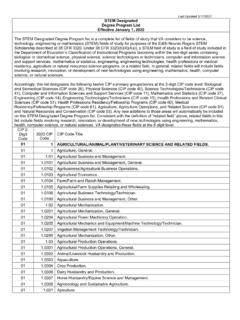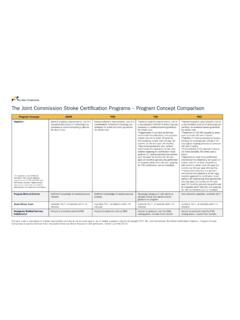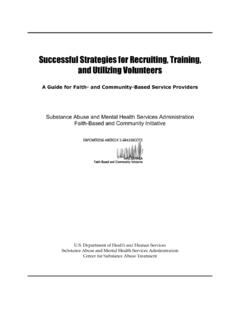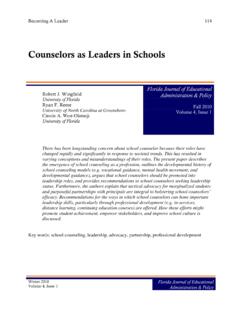Transcription of Arts Education In Public Elementary and Secondary Schools ...
1 ArtsEducationIn Public Elementary and Secondary Schools 1999 2000 and 2009 10 NCES 2012 -014 Department of EducationArtsEducationIn Public Elementary and Secondary Schools1999 2000 and 2009 10 Basmat ParsadMaura SpiegelmanWestatJared CoopersmithProject OfficerNational Center for Education StatisticsNCES 2012 DEPARTMENT OF Department of EducationArne DuncanSecretaryInstitute of Education SciencesJohn Q. EastonDirectorNational Center for Education StatisticsJack BuckleyCommissionerEarly Childhood, International, and Crosscutting Studies DivisionVal PliskoAssociate CommissionerThe National Center for Education Statistics (NCES) is the primary federal entity for collecting, analyzing, and reporting data related to Education in the United States and other nations.
2 It fulfills a congressional mandate to collect, collate, analyze, and report full and complete statistics on the condition of Education in the United States; conduct and publish reports and specialized analyses of the meaning and significance of such statistics; assist state and local Education agencies in improving their statistical systems; and review and report on Education activities in foreign activities are designed to address high-priority Education data needs; provide consistent, reliable, complete, and accurate indicators of Education status and trends; and report timely, useful, and high-quality data to the Department of Education , the Congress, the states, other Education policymakers, practitioners, data users, and the general Public .
3 Unless specifically noted, all information contained herein is in the Public strive to make our products available in a variety of formats and in language that is appropriate to a variety of audiences. You, as our customer, are the best judge of our success in communicating information effectively. If you have any comments or suggestions about this or any other NCES product or report, we would like to hear from you. Please direct your comments toNCES, IES, Department of Education1990 K Street NWWashington, DC 20006-5651 April 2012 The NCES Home Page address is NCES Publications and Products address is report was prepared for the National Center for Education Statistics under Contract No.
4 ED-04-CO-0059/0025 with Westat. Mention of trade names, commercial products, or organizations does not imply endorsement by the CitationParsad, B., and Spiegelman, M. (2012). Arts Education in Public Elementary and Secondary Schools : 1999 2000 and 2009 10 (NCES 2012 014). National Center for Education Statistics, Institute of Education Sciences, Department of Education . Washington, ordering information on this report, write toED Department of Box 22207 Alexandria, VA 22304or call toll free 1-877-4-ED-Pubs or order online at ContactJared Coopersmith(202) Education in Public Elementary and Secondary SchoolsAcknowledgmentsThe authors would like to recognize the school principals and teachers in Public Elementary and Secondary Schools who provided data on arts Education upon which the report is based.
5 The data were collected on behalf of the Office of Innovation and Improvement in the Department of Education . Select photos courtesy of the Department of Education and the Educational Theatre Association. This page intentionally left Education in Public Elementary and Secondary SchoolsTable of Contents PageAcknowledgments ..IIIList of Tables ..VIIList of Figures ..IXAppendix A Tables ..XIAppendix B Tables ..XIIntroduction ..1 Arts Education at a Glance ..5 Elementary Schools and Teachers ..5 Availability of arts Education .
6 5 Characteristics of arts Education programs ..6 Arts Education activities outside of regular school hours and school -community partnerships ..7 Teaching load ..7 Secondary Schools and Teachers ..9 Availability of arts Education ..9 Characteristics of arts Education programs ..10 Arts Education instructors ..11 Graduation requirements and the calculation of grade point averages ..11 Arts Education activities outside of regular school hours and school -community partnerships ..12 Teaching load ..13A Closer Look at Music Education ..14 Elementary Schools and Teachers ..14 Indicator 1: Availability of Music Education ..14 Indicator 2: Characteristics of Music Education Programs ..15 Indicator 3: Music Professional Development for Teachers.
7 16 Indicator 4: Teaching Load for Music Specialists ..17 Indicator 5: Integration of Music and Other Subject Areas ..18 Indicator 6: Student Assessment in Music ..20 Secondary Schools and Teachers ..21 Indicator 7: Availability of Music Education ..21 Indicator 8: Characteristics of Music Education ..22 Indicator 9: Music Professional Development for Teachers ..23 Indicator 10: Teaching Load for Music Specialists ..24 Indicator 11: Integration of Music and Other Subject Areas ..25 Indicator 12: Student Assessment in Music ..26 Arts Education in Public Elementary and Secondary SchoolsVITable of Contents (continued) PageA Closer Look at Visual Arts Education .
8 28 Elementary Schools and Teachers ..28 Indicator 13: Availability of Visual Arts Education ..28 Indicator 14: Characteristics of Visual Arts Education ..29 Indicator 15: Visual Arts Professional Development for Teachers ..30 Indicator 16: Teaching Load for Visual Arts Specialists ..31 Indicator 17: Integration of Visual Arts and Other Subject Areas ..32 Indicator 18: Student Assessment in Visual Arts ..32 Secondary Schools and Teachers ..34 Indicator 19: Availability of Visual Arts Education ..34 Indicator 20: Characteristics of Visual Arts Education ..35 Indicator 21: Visual Arts Professional Development for Teachers ..36 Indicator 22: Teaching Load for Visual Arts Specialists ..37 Indicator 23: Integration of Visual Arts and Other Subject Areas.
9 38 Indicator 24: Student Assessment in Visual Arts ..39A Closer Look at Dance Education ..40 Elementary Schools ..40 Indicator 25: Availability of Dance Education ..40 Indicator 26: Characteristics of Dance Education ..41 Indicator 27: Dance Professional Development for Teachers ..42 Secondary Schools ..43 Indicator 28: Availability and Characteristics of Dance Instruction ..43 Indicator 29: Dance Professional Development for Teachers ..45A Closer Look at Drama / Theatre Education ..46 Elementary Schools ..46 Indicator 30: Availability of Drama/Theatre Education ..46 Indicator 31: Characteristics of Drama / Theatre Programs ..46 Indicator 32: Drama /Theatre Professional Development for Teachers.
10 48 Secondary Schools ..49 Indicator 33: Availability and Characteristics of Drama/Theatre Instruction ..49 Indicator 34: Drama/Theatre Professional Development for Teachers ..51 Related Reports ..52 Appendix A: Technical Notes ..A-1 Appendix B: Standard Errors for Text Tables and Figures ..B-1 VIIArts Education in Public Elementary and Secondary SchoolsList of TablesTable Page1 Percent of Public Elementary school music and visual arts specialists who taught the arts subject full time, and of those teachers, percent reporting various indicators of teaching load: school year 2009 10.
